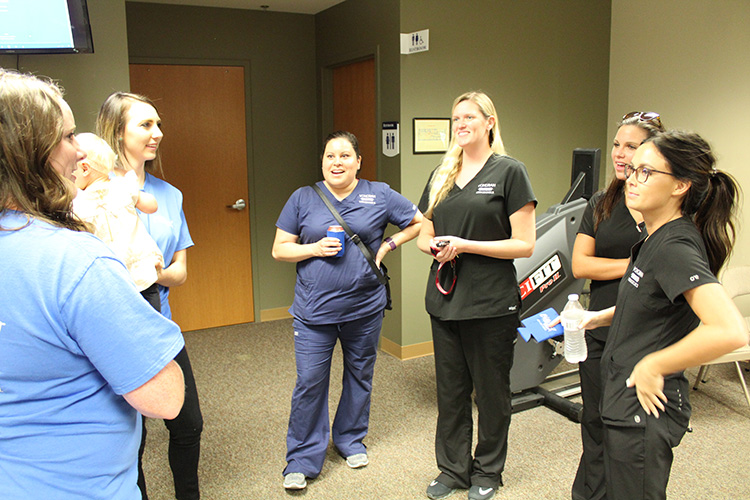Duragesic Addiction Rehab Programs Ceresco NE
Home
Top Duragesic Addiction Rehab Programs Ceresco NE Resources
Duragesic Addiction Rehab Programs Ceresco NE
Most treatment centers base their statistics on the people who complete the program and are drug and alcohol-free. Self-efficacy refers to one's ability to deal competently and effectively with high-risk, relapse-provoking situations.
Individual factors that help you in drug rehab include: the degree of support from family and friends willingness to be honest and open your motivation to change Family and friends can play critical roles in helping you enter and stay in treatment. Field evidence does point to preferential grazing of some known toxic plants, e.g. If you scored 2, there is an 85% chance you’re addicted.
Even more Details About Immediate Drug Rehab

Extra Resources For Immediate Drug Rehab Ceresco NE
I have cried, yelled, talked, prayed, pleaded and begged. And you don’t really know what junk sickness is until you have had several habits.
Below are Some Even more Resources on Heroin Addiction Rehab Programs
California, Chicago and Detroit are major sources supplying cocaine to the state. ChristianBasedRehabCentersInTexas Christian Based Rehab Centers In Texas - Explore treatment options and professional care for addiction [ Christian Based Rehab Centers In Texas ] !!! Decades of research has shown that drug addiction is deeper than a compulsion. When you call an addiction hotline, you are going to the right person, and fifty percent of the problem is solved right then and there.
Here are Some Even more Resources on Xanax Detox Clinic Ceresco NE
Every day you wait, your chances of something negative in life happens. In fact, your faith might help you feel less stressed and make it easier to relax in recovery. Rogers believed the presence of these three items in the therapeutic relationship could help an individual overcome any troublesome issue, including alcohol abuse. If you’re worried that a friend or loved one might be abusing drugs, look for the following warning signs: Physical warning signs of drug abuse or addiction Bloodshot eyes, pupils larger or smaller than usual Changes in appetite or sleep patterns Sudden weight loss or weight gain Deterioration of physical appearance, personal grooming habits Unusual smells on breath, body, or clothing Tremors, slurred speech, or impaired coordination Behavioral warning signs of drug abuse or addiction Drop in attendance and performance at work or school Unexplained financial problems; borrowing or stealing Engaging in secretive or suspicious behaviors Sudden change in friends, favorite hangouts, and hobbies Frequently getting into trouble (fights, accidents, illegal activities) Psychological warning signs of drug abuse or addiction Unexplained change in personality or attitude Sudden mood swings, irritability, or angry outbursts Periods of unusual hyperactivity, agitation, or giddiness Lack of motivation; appears lethargic or "spaced out" Appears fearful, anxious, or paranoid Warning signs of commonly abused drugs Marijuana: Glassy, red eyes; loud talking, inappropriate laughter followed by sleepiness; loss of interest, motivation; weight gain or loss. Such approaches are the quintessential features of Twelve-step programs, originally published in the book Alcoholics Anonymous in 1939.[26] These approaches have met considerable amounts of criticism, coming from opponents who disapprove of the spiritual-religious orientation on both psychological[27] and legal[28] grounds.
Click Here for More Information
Previous Next
You may also like:
Acamprosate Addiction Detox Oconomowoc WI
Butalbital Addiction Rehab Programs Ghent KY
Concerta Abuse Treatment Facilities Golden MS
Darvocet Detox Facilities Kossuth PA
Campral Addiction Rehab Prinsburg MN
Ketamine Rehab Treatment Programs Ishpeming MI
Damason-p Detox Facility Pearl MS
Speed Addiction Detox Clinics Bon Aqua TN
Triazolam Abuse Programs Waynetown IN
Alprazolam Abuse Treatment Center Laurel Hill FL
Drug Rehab Cost Barrow AK
Tranquilizers Addiction Treatment Centers Edmon PA
Librium Detox Treatment Centers Saint Marys PA
Adderall Rehab Treatment Program Sitka KY
Temesta Addiction Treatment Program Yakutat AK
Methaqualone Addiction Detox Center New Douglas IL
Methamphetamine Addiction Program Athens WI
Msir Rehab Center Near Me Greendale WI
Quaalude Detox Treatment Centers Green Pond SC
Damason-p Addiction Rehab Clinics Boons Camp KY
Revia Abuse Clinic Mirando City TX
Marijuana Rehab Clinic Kamrar IA
Mdma Detox Facility New Haven MO
Campral Addiction Detox Programs Hudson KS
Campral Detox Program Mc Clure VA